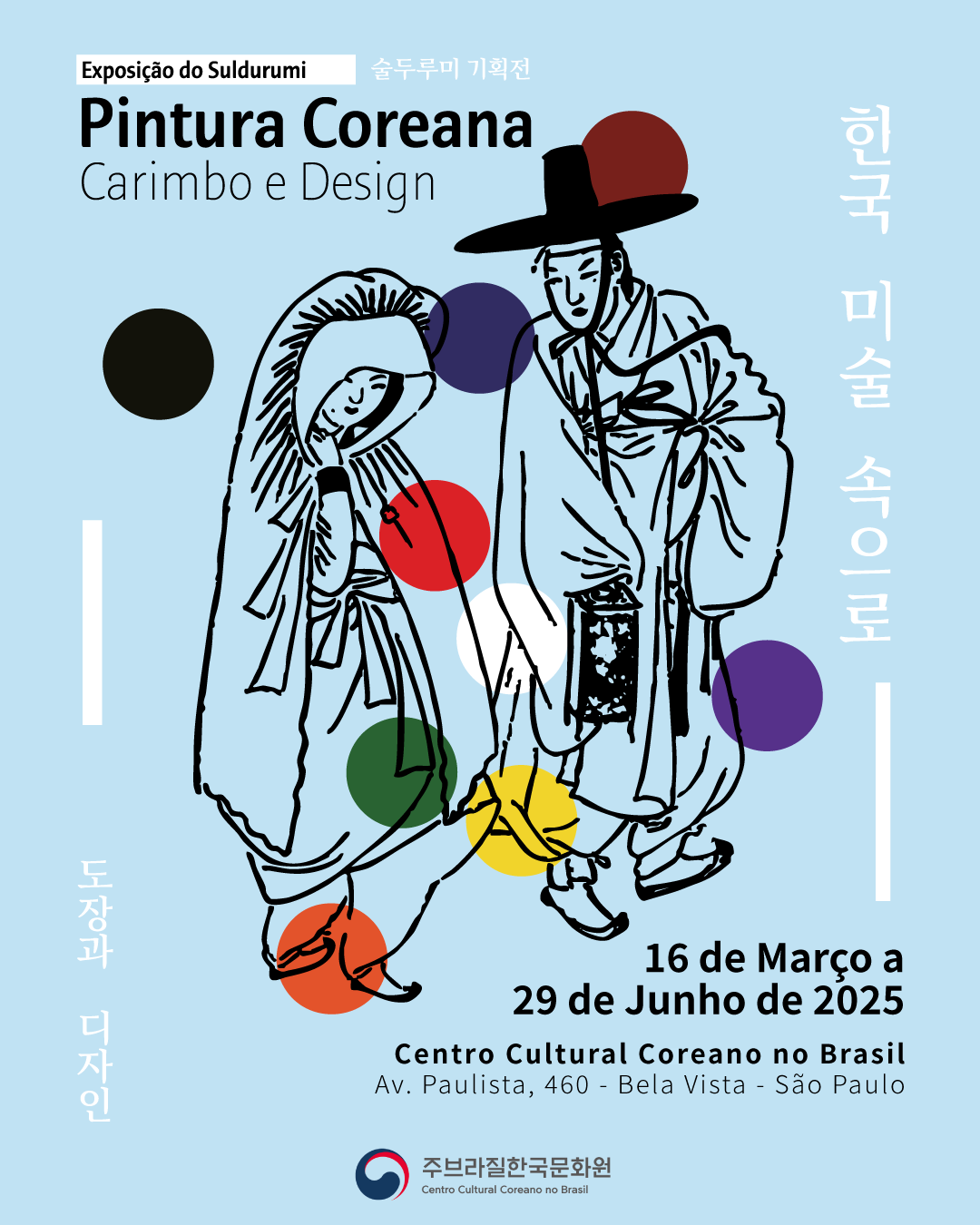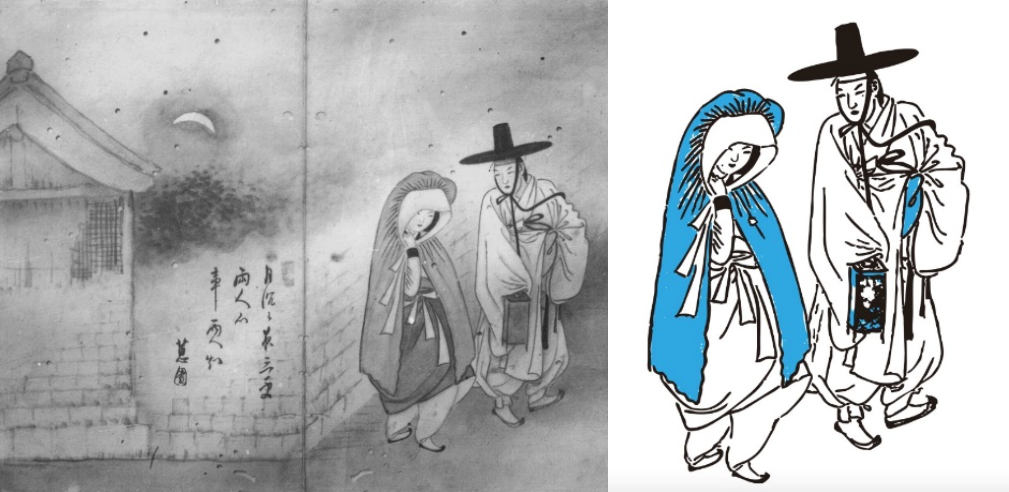
An image containing a poster with general information about the exhibition being hosted by the Korean Cultural Center in Brazil.
From March 16 to June 29, the Korean Cultural Center in Brazil presents the exhibition by artist Suldurumi (술두루미), titled Korean Painting: Stamps and Design. The exhibition showcases reinterpretations of traditional South Korean art, creating a dialogue between the past and the present.
A graduate in graphic design, Suldurumi works with elements such as bojagi (보자기) — a traditional Korean textile art that pieces together geometric fabric scraps into a single cloth — and minhwa (민화), popular Korean folk paintings from the 18th and 19th centuries depicting everyday life and customs of the time. Drawing from traditional Korean art as a source of contemporary creation, Suldurumi also finds inspiration in the poetry of Yun Dong-ju (윤동주) (1917–1945), renowned for his resistance poems during the Japanese occupation, weaving these influences into his artwork.

1. Shin Yun-bok (신윤복); Weolha Jeongin (월하정인) (Two Lovers Under the Moonlight), Joseon Dynasty; Credit: National Museum of Korea | 2. Suldurumi; Weolha Jeongin (Two Lovers Under the Moonlight); 2025 Credit: Suldurumi
In his reinterpretations, Suldurumi recreates scenes from ancient Korean artworks using graphic prints, paintings, and layered stamps. This marks the first time the artist is holding an exhibition outside South Korea.
Visitors will not only experience the artist’s work in the gallery but will also have the chance to try out stamp sets inspired by Suldurumi’s reimagination of traditional Korean pieces — taking home a memorable piece of the experience. By showcasing his creative process and offering stamps for hands-on participation, the artist aims to make his art accessible to a wider audience.
About the Artist
Born in 1994 in Busan, Suldurumi graduated in graphic design. In 2021, after beginning his career in the advertising industry, he launched the project that now defines his artistic identity. The name Suldurumi was inspired by an old meaning of his birth name, referring to a large jar used for storing alcoholic beverages. Just like the jar, which once brought joy and connection to those around it, the artist hopes his work will spark fun and engagement for those who encounter it.
Exhibition Details
- Dates: March 16 to June 29, 2025
- Opening Hours:
- Tuesday to Saturday: 10 AM – 6:30 PM
- Sunday: 11 AM – 5 PM
- Location: Korean Cultural Center in Brazil
- Address: Avenida Paulista, 460. Ground floor. Bela Vista, São Paulo/SP
- Age Rating: All ages
- Admission: Free
- Inquiries: contato@kccbrazil.com.br